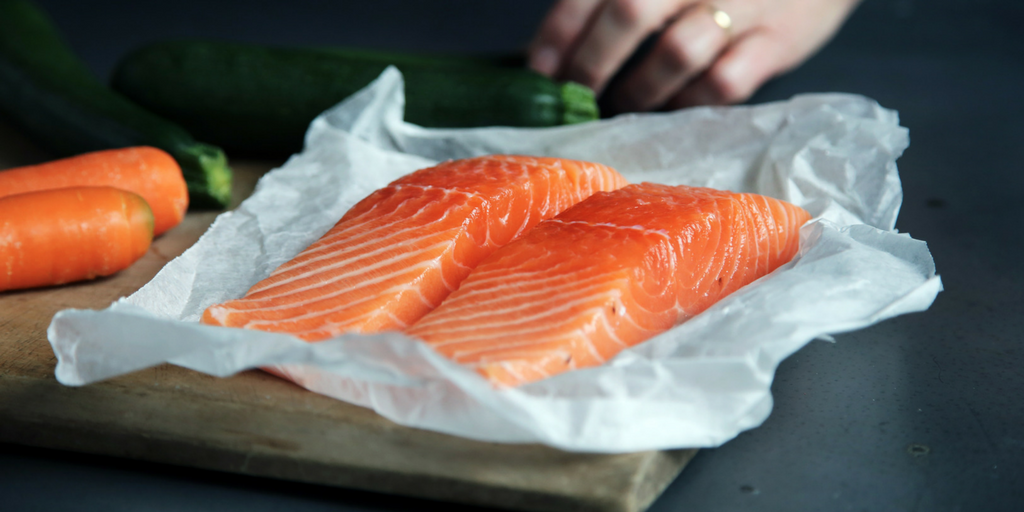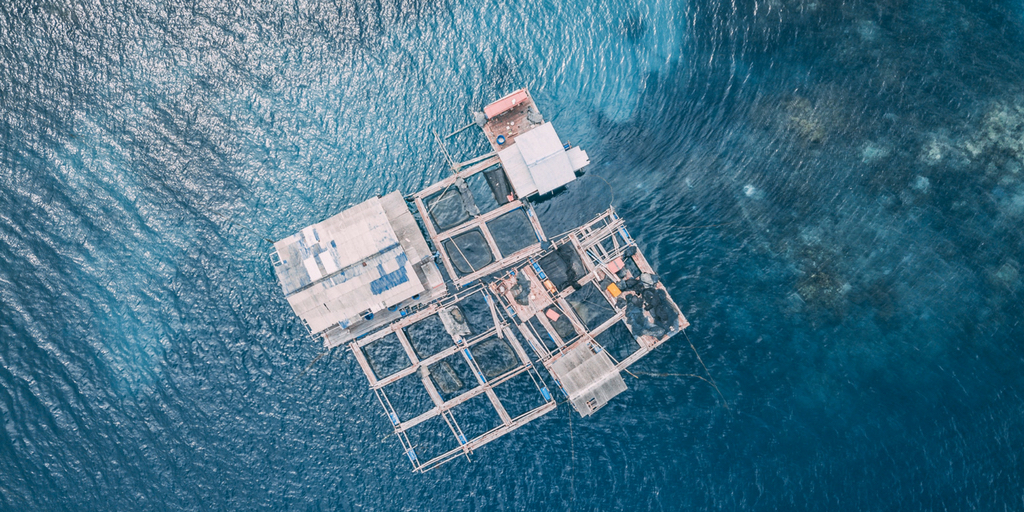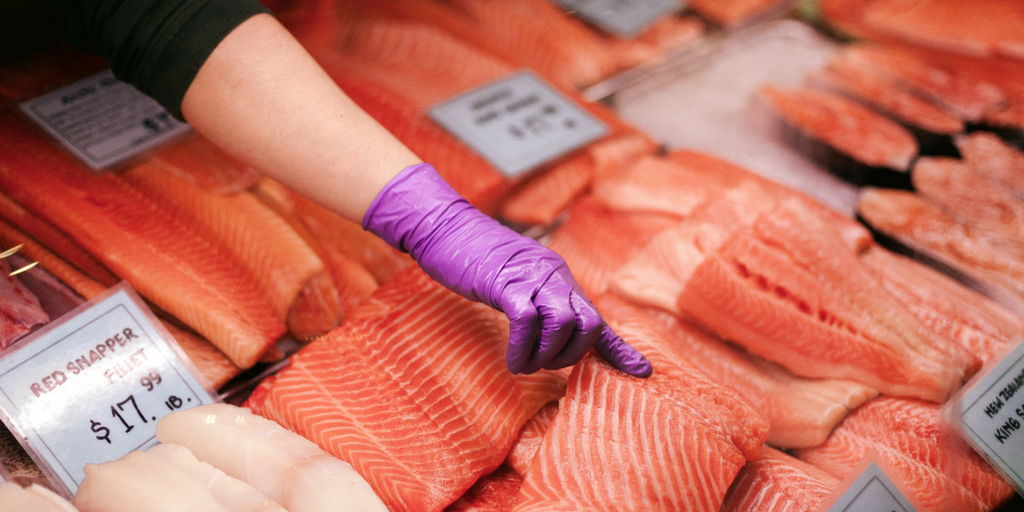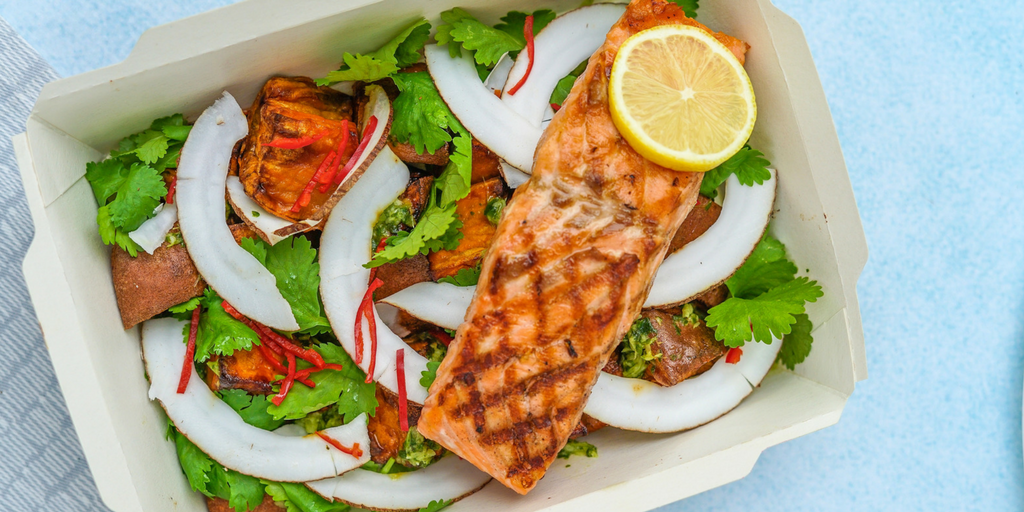Farmed Vs. Wild Fish: Which Is Better For A Healthy Gut?

When you think of a “healthy” meal, what comes to mind?
When I think of healthy food, I always picture a bright pink fillet of salmon.
Something that looks like this:

But is fish always a gut healthy food?
The answer isn’t clear cut. There’s a lot to consider when it comes to eating fish…
- Is it farmed fish or wild caught?
- Fresh, frozen, or canned?
- Is it environmentally friendly?
- Should I just take a fish oil pill instead?
Today, I’m going to address all those questions and give you our bottom line recommendations for eating fish – how much, what type, and what to do if you can’t.
Farmed Fish Vs. Wild Caught
If you go to the fish counter, you’ll see that almost all fish is marked as either “wild” or “farmed.”
The second thing you’ll notice? The farmed fish is almost always less expensive than the wild.
So, what’s the difference and why should you care?
Wild fish is – as the name suggests – wild! Some seafood – like crab and tuna – is almost exclusively wild.
Others – like salmon – are more often farm-raised. In fact, 80-90% of all commercially available salmon is farmed. Fish can be farmed in either on-land fish pens – think swimming pools full of fish – or in open pen nets in the ocean, just off the shore.
There are 3 main issues with farmed fish: environmental pollution, contamination, and nutritional value.
Farmed Fish & The Environment
Not thinking about the environment when you’re at the fish counter? You should be.
These are some of the environmental issues fish farming contributes to:
- Transfer of disease between wild and farmed fish
- Ocean pollution under nets (fish food and excrement buildup)
- Destruction of ocean habitat
- Increased sea lice
- Escaped farmed fish become an invasive species
Fish that are farmed in net pens have an increased risk of disease. They can spread that disease to wild fish.
But it gets worse. Farmed fish are given antibiotics to combat disease in the net pens. Sometimes the antibiotics are released into the water and sometimes they are injected directly into the fish.
Those antibiotics can contribute to the rise of more antibiotic-resistant bacteria. They also contaminate our ocean water. And, if the fish you’re eating were given antibiotics, you’re also ingesting those antibiotics – which brings us to the next big problem with farmed fish: contamination.
Antibiotics, PCBs, And Other Fish Contaminants

Antibiotic use in farmed fish isn’t just an environmental issue – it’s a health issue for you.
A 2015 study that compared samples of farmed fish from 11 countries found 5 antibiotics in shrimp, salmon, tilapia, and trout.
They even found antibiotic residue in fish labeled “antibiotic-free” and wild shrimp – probably due to run-off from farmed shrimp nets nearby.
Antibiotics aren’t the only problem, either. Other common contaminants in farmed fish include:
- Fire retardants
- Pesticides
- Dioxins
- Copper sulfite
- Canthaxanthin (dye to make the flesh more pink)
- PCBs
PCBs (polychlorinated biphenyls) are cancer-causing chemicals that get into fish through the processed fishmeal (made from ground up fish) they are fed in fish farms. The Environmental Protection Agency has “found clear evidence that PCBs have significant toxic effects in animals, including non-human primates.” PCBs can have a negative effect on the immune, reproductive, and endocrine systems.
Farmed salmon is one of the biggest dietary sources of PCBs. According to research conducted by the Environmental Working Group, “on average farmed salmon have 16 times the dioxin-like PCBs found in wild salmon, 4 times the levels in beef, and 3.4 times the dioxin-like PCBs found in other seafood.”
So, why isn’t there EPA regulation of PCBs in fish? There actually is. But here’s the catch: the EPA can only regulate PCB levels in wild caught salmon. Farmed salmon is regulated by the Food and Drug Administration (FDA). EPA regulations for PCB levels in wild caught fish are 500 times more protective than the PCB regulations the FDA places on farmed fish.
High PCB levels in farmed fish are a serious issue – but fish farmers seem to have found a solution: they are replacing the fishmeal used in traditional fish food with fish food made from grains and soy. But grain and soy based foods come with issues of their own.
Omega-3s In Farmed Fish
While wild fish forage for food, farmed fish are fed manufactured fish pellets. Many fish are carnivorous, so fishmeal used to be the main ingredient in fish pellets. However, fishmeal is often contaminated with high levels of cancer-causing PCBs. In an attempt to reduce the level of PCBs in fish, fishmeal was supplemented by fish pellets made from grains and soy.
Much like what happens to cows raised in conventional dairies, the fish quickly get fat on the grain-based pellets. Farmed fish are significantly fattier than wild-caught fish.
At first, this seems like a good thing. After all, fish are a potent source of beneficial Omega-3 fatty acids. And more fat should mean more Omega-3, right?
Wrong. The grain-based diet (an incredibly unnatural diet for fish) leads to an increase in Omega-6 fat. And while you may have heard that wild and farmed fish contain the same amount of Omega-3, that is only because the farmed fish contain so much more fat overall.
A serving of wild salmon has half as much fat as the same size serving of farmed salmon. This means farmed salmon has a higher calorie count and less protein, too.
The Bottom Line On Eating Farmed Fish
While some people might disagree, here is our stance: if you can’t eat wild fish, it’s probably better to not eat fish at all.
Farmed fish have more fat but less Omega-3s, are contaminated with PCBs, antibiotics, and other contaminants, and fish farming has serious environmental consequences. Wild fish are better for you and for our planet.
Whether you’re buying salmon, trout, shrimp – or any other kind of seafood – make sure it is wild.
Avoiding farmed fish doesn’t have to be a burden – keep reading for our tips on buying wild fish affordably.
Fresh, Frozen, Or Canned?

Wild fish is almost always more expensive than farmed fish. One way to save money is to skip fresh fish and opt for frozen or canned instead.
And, unless you have access to a great fishmonger, there’s a good chance that the “fresh” fish you’re looking at is actually “previously frozen.” Fresh fish goes bad very quickly.
Our favorite way to buy fish is individually flash frozen. It preserves the nutrients and individual fillets defrost quickly for a fast dinner.
Canned fish is another good option. We like canned tuna, sardines, and salmon. Look for wild fish in BPA-free packaging.
Check out this guide to common fish types you’ll find in the grocery store.
Is Fish Oil As Good As Eating Fish?
If you’re not a fish fan – or just overwhelmed by all this information – you might think you can skip eating fish and take a fish oil supplement instead.
Not so fast.
While we don’t think taking a high-quality fish oil supplement is a bad idea, there is evidence to suggest that taking fish oil isn’t as effective as eating whole fish.
It comes down to absorption – whole fish contains other important vitamins and minerals, as well as potential co-factors. This means that you may absorb more beneficial EPA and DHA from whole fish than you would from even a larger serving of fish oil.
(If you’re interested in this topic, make sure you read this article from Chris Kresser on fish oil vs. whole fish.)
If you’re supplementing, this fish oil is a good choice.
What You Really Need To Know About Eating Fish

Here’s our bottom line for eating fish:
- Avoid farm-raised fish
- Aim for 2 servings of wild-caught fish each week (if you’re pregnant, make sure you talk with your doctor)
- Supplement with a fish oil, but know it may not provide all the benefits of regularly eating wild fish
Where We’re Buying Fish
If you live near the water, you might be able to buy wild fish from a local fishmonger. You can also usually find high-quality frozen and canned fish at most grocers and big-box stores like Costco, too.
But now there’s another option, too. We’re excited to let you know our friends at Butcher Box are now offering wild-caught salmon as part of their boxes.
If you aren’t part of Butcher Box yet, it is our go-to resource for high-quality meat and chicken. They source and sell free-range and pastured meats that are better quality and more fairly priced than what you can find in grocery stores. It’s all shipped directly to you as often as you want.
And right now, to celebrate the launch of their salmon, Butcher Box is giving away 2 pounds of Wild Alaskan Sockeye Salmon to all new Butcher Box subscribers. If you want to get some free high-quality wild salmon, go here.
I hope this guide has been helpful to you. If you have more questions, leave us a comment below!
In health,
Jordan
Did You Like this Article?
Subscribe to our newsletter to receive email notifications, some ways to find relief, and next steps.
